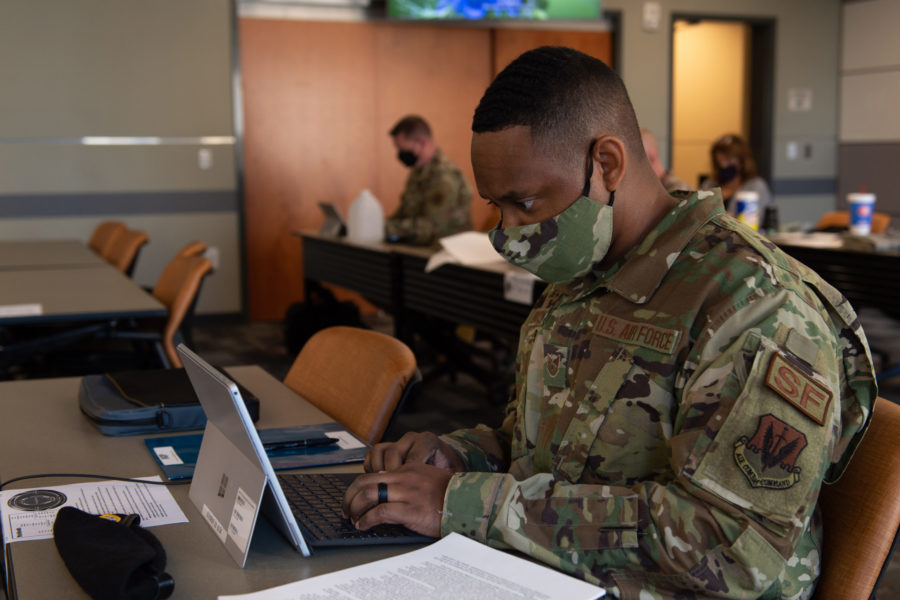The Air Force has been modernizing for years, digitizing a variety of tasks. That transition has been greatly accelerated by the pandemic. While the majority of organizations, including the Air Force, may have allowed intermittent telework, they had never before had to contend with the challenges of an almost fully remote workforce. As a result, airmen are now distributed in unprecedented ways.
As airmen have transformed dining rooms into desks and serve as technical support for their children’s remote learning, bigger challenges persist. How does an organization such as the Air Force transition from an in-person prioritization and planning process to an equally effective digital alternative during and after the pandemic?
How has changing to a remote work environment affected the way organizations conduct their day-to-day business operations and decision-making processes? According to a Harvard Business Review study on knowledge workers conducted earlier this year, since COVID-19 workers have spent 12% less time managing across their organizations through meetings, and 9% more time on externally focused work with customers or other external partners. The study’s findings suggested that workplace changes due to COVID-19 have helped us to more effectively prioritize our work. We are spending less time in meetings, and more time doing the work that allows our organization to be successful.

At least one Air Force organization has managed to successfully carry on its activities virtually through the use of technology enablers during the pandemic. This organization is tasked with many Top-Secret level projects to support the Air Force mission.
The organization’s Program Objective Memorandum (POM) process for collecting, managing, and prioritizing its budgeting data is complex due to the large number of stakeholders involved and the important mission of the organization. Prior to COVID-19, the process was already effective in many ways—sophisticated enough to receive inputs from many stakeholders and to capture complex layers of data. However, it involved multiple disconnected systems and spreadsheets for requirements collection, gap analysis, prioritization, and programming. In addition, while many aspects of their process did not include classified data, the nature of their work could only be reached through certain physical access points on a military base.
Once COVID-19 lockdown restrictions began, access to the base and thus the network became limited because nearly all employees had become remote. The organization had two choices:
- They could delay their process until post-pandemic, thereby creating schedule risk,
- They could find a way to streamline and automate their existing process so that valuable work could continue in spite of the majority of their workforce teleworking.
This past fall, more than 150 Action Officers, Approvers, and Senior Leaders collaborated to manage their data using a new, innovative process. They gained approval to move part of their data and processes to a cloud-based service that could be accessed from any location. This helped them complete their data collection, evaluation, and prioritization steps in a more efficient way and circumvented much of the access issue. The new process was further bolstered by the organization moving large portions of their data to a single platform that allowed for data-distributed management for all stakeholders in the organization.
The organization moved from using multiple platforms to a single platform for collecting Gaps and Issues, managing the meta data, leveraging permissions for user access, and prioritizing. These innovative adjustments enabled them to gain even greater efficiency in their process and to continue serving their mission during an uncertain time. Despite the challenges, training, and change management inherent in a new process, the organization’s leaders reported a 25% improvement for the process compared to pre-pandemic, and expect additional improvements in the coming years.
To consolidate this process, the organization partnered with Decision Lens, a data-science based decision-making solution that helps organizations with effective planning. Decision Lens provided the organization with a FedRAMP certified data and analytics management platform, housed in an easy-to-use software system. Action Officers were able to access, update and score their data to generate a prioritization, which was then used as the key artifact during group and board final reviews. This process not only eliminated the need for multiple disconnected spreadsheets and systems, but also enabled senior leaders to have greater insight into deeper layers of decision drivers.
The partnership with Decision Lens enabled the organization to create a direct line from strategic priorities to collection, to management, to scoring. COVID-19 has led the organization to streamline its procedures and operate more efficiently than ever before.
The pandemic has forced many people and organizations to become creative in how they operate, and in some ways to rethink their decision-making processes. Ongoing isolation has led organizations to work harder than ever to collaborate and work together. Organizations have realized the limitations of their traditional methods of storing and processing data and are seeking modern solutions to not only continue operations, but to actually innovate and improve their processes to advance towards their goals without geographical limitations.
Decision Lens helps organizations prioritize, plan, and allocate resources effectively. Learn more about how your organization can thrive by automating certain programming, budgeting, and execution processes in a distributed workforce environment.
